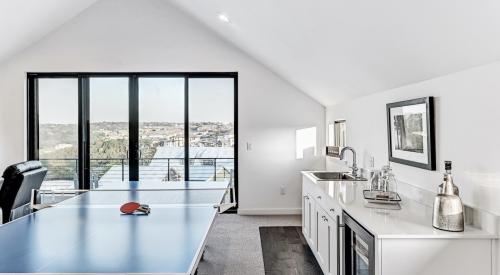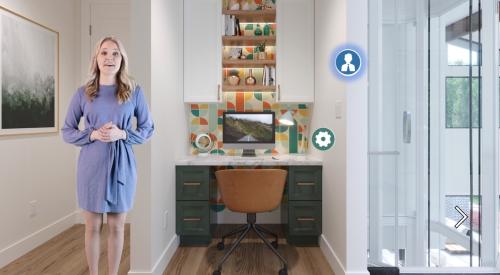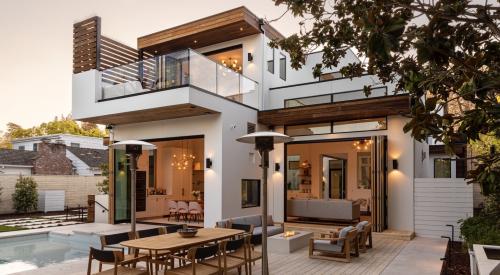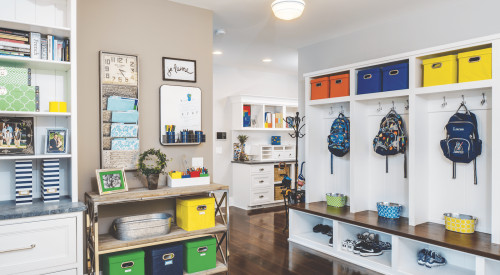When the COVID-19 pandemic put most of the nation under mandatory stay-at-home orders, economic forecasters hypothesized about the impact it would have on restaurants, small business, travel and hospitality, and live events.Yet few people were talking about the impact “life from home”—including the impact of remote work and school—would have on how people use and think about their homes and communities.
I figured the only way to find out was to ask, and the America at Home (AAH) study I created with consumer strategist Belinda Sward of Strategic Solutions Alliance and architect Nancy Keenan, president and CEO of Dahlin Group Architecture | Planning, did just that.
Two surveys, in April and October of 2020, earned responses from nearly 7,000 consumers nationwide, ranging in age from 25 to 74, with household incomes of $50,000 or more.
RELATED
- Barnaby: The America at Home Study Concept Home Step by Step
- Post-COVID, Homeowners Look for Homes That Do More
- What Can Builders Market During a Pandemic? Try Empathy and Security
People shared what “home” means to them, new routines they’ve adopted because of the pandemic, changes they’ve made to their current home to accommodate new lifestyle (and work- and study-style) needs, as well as things they found lacking ... and were willing to pay for in their next home.
Putting the ‘D’ in R&D
The data shined a bright light on lasting behavioral changes and perspectives about “home” induced by the pandemic that needed to be shared with architects, builders, and planners; not just in a research report or through a webinar series, but in real life—in other words, in a real home.
I invited Alaina Money-Garman, CEO of Garman Homes, in Cary, N.C., to collaborate on the idea and building of a concept home that would showcase key findings from our research. Our goal was to inspire others to take a people-first approach to design and build homes in their local markets that respond to changing consumer needs. She jumped at the chance. “It was powerful to see how directly this insight translated into ways we thought about the people who will live in our homes,” Money-Garman says. “It’s important to design a home around them, to support the way they want to live, instead of around a set of features.”
Through a series of discussions and charettes led by Dahlin Group, the concept home program took shape around a hypothetical older Millennial family with one child in elementary school, another in preschool, one parent working outside the home, and the other working from home.
The team studied consumer needs and pain points to create a home where every inch matters. The result is Barnaby (named after my precious gray standard poodle), a 2,600-square-foot, two-story home with four bedrooms, 3 ½ baths, and two innovative office spaces on a 45-foot alley-loaded lot in Chatham Park, N.C., about 30 miles east of Raleigh.
While that description of the home paints a broad picture, the finer details—and how they were designed, built, and outfitted—fill in several blanks now in demand by post-COVID homeowners.
Home Design: New Demands, New Opportunities
Barnaby will not only serve as a model home for Garman Homes, but also as a teaching and learning opportunity for the company and the housing industry.
Those who tour the home are encouraged to provide feedback by literally writing it on the walls of the home’s garage (see below), and we’re also capturing data to augment the surveys’ findings and to further refine the concept.
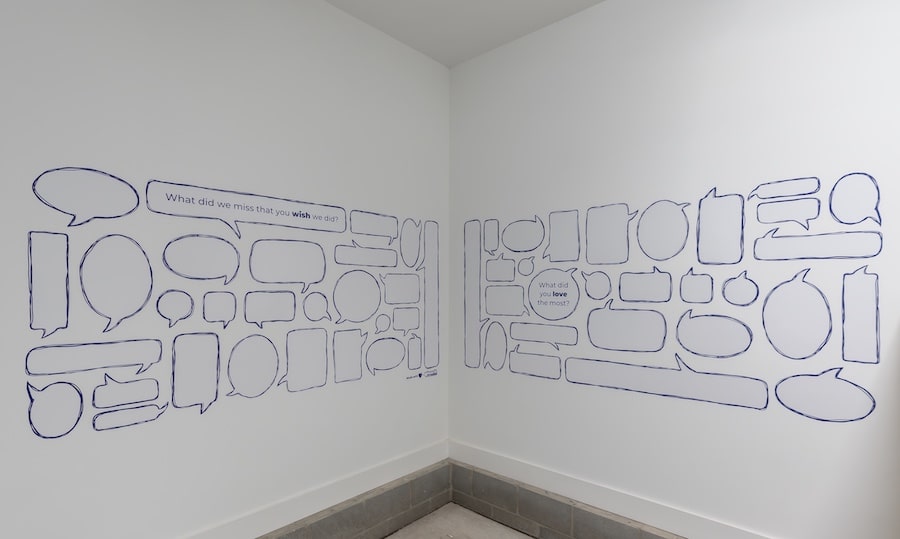
In addition, and perhaps more importantly, the AAH study found that current homeowners intend to move sooner than previously planned, and 50% of renters say that life with COVID has made them more inclined to want to buy a home versus renting.
That news translates to a pool of 11 million potential pandemic-motivated new-home buyers.
Home builders willing to dig in and understand “the why” behind the consumer insights derived from the AAH surveys and manifested in the Barnaby concept home have an opportunity to create houses that will meet consumer needs in new and innovative ways.
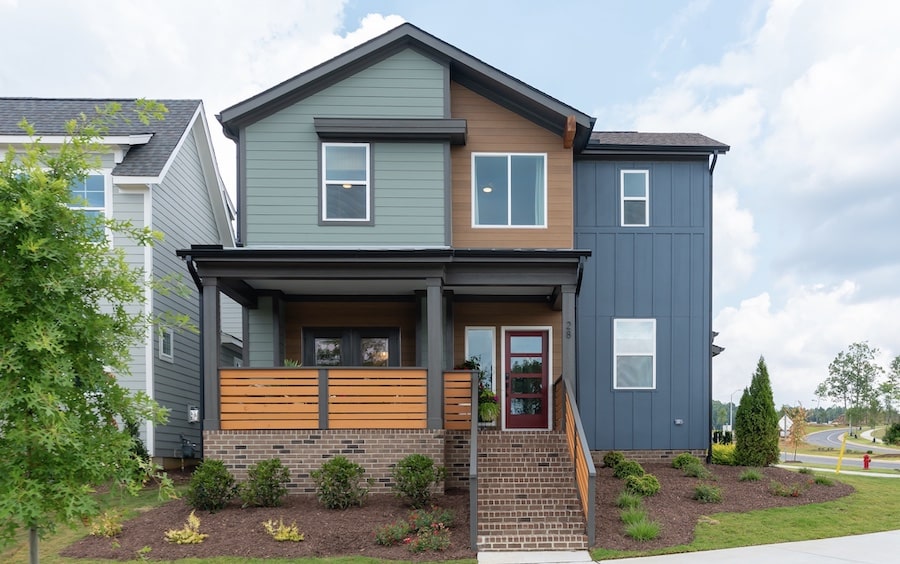
Barnaby Project Specs
Project name: Barnaby, America at Home Study Concept Home
Location: Chatham Park, N.C.
Size: 2,600 sf
Beds/baths: 4 / 31/2 + office/flex
Builder: Garman Homes, Cary, N.C.
Architect: Dahlin Group Architecture | Planning, Pleasanton, Calif.
Research team: tst ink, Encinitas, Calif., and Strategic Solutions Alliance, San Diego
More info: probuilder.com/america-at-home-study
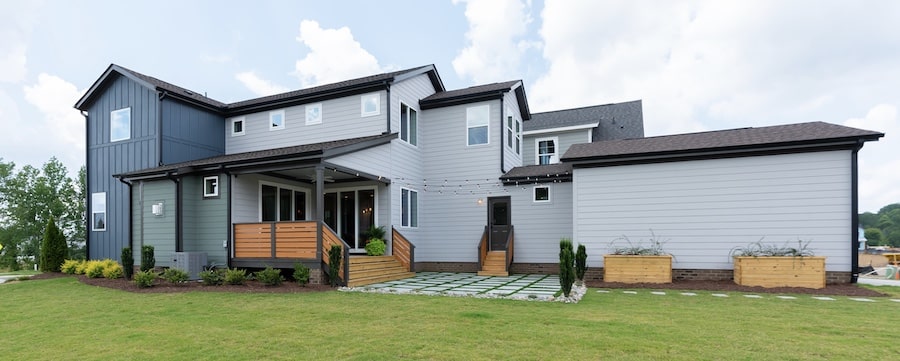
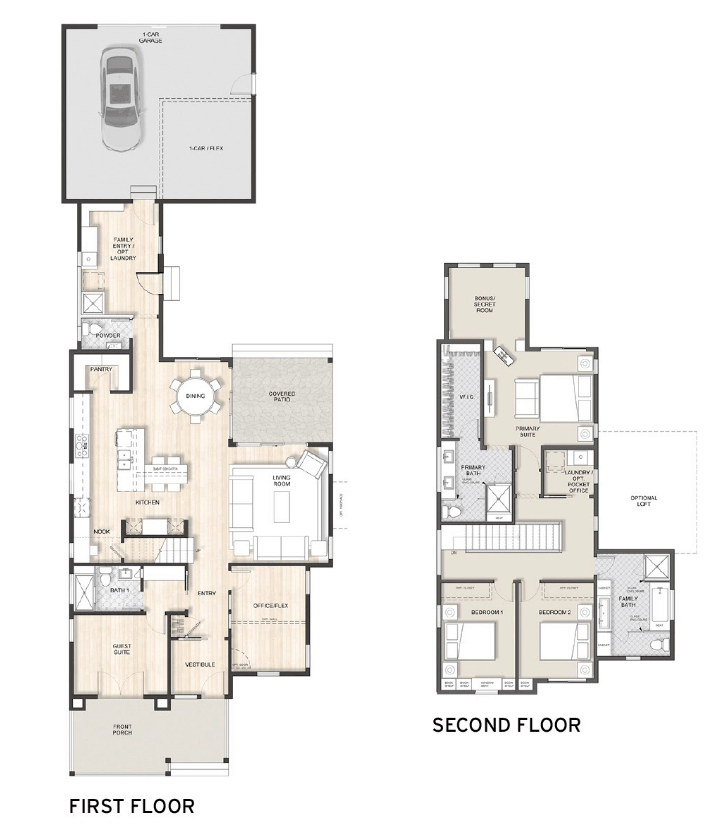
LESSON 1: A more functional family entry
“Disinfecting things more” is the top behavioral change caused by COVID, and 81% of people in the AAH study expect that practice to continue. To support that, a family entry from the garage includes two sinks; one in the laundry room (reflecting an 11% increase in that desire) and one in a powder room that can be converted into a shower.
There’s also a secondary refrigerator and direct access to the outdoor side yard—a detail inspired by 73% of people who plan to continue using their yards to entertain family and friends. The family entry also serves as a drop zone, with built-in benches and storage for all of the things a family brings into their home but wants to sequester from the rest of the living spaces.
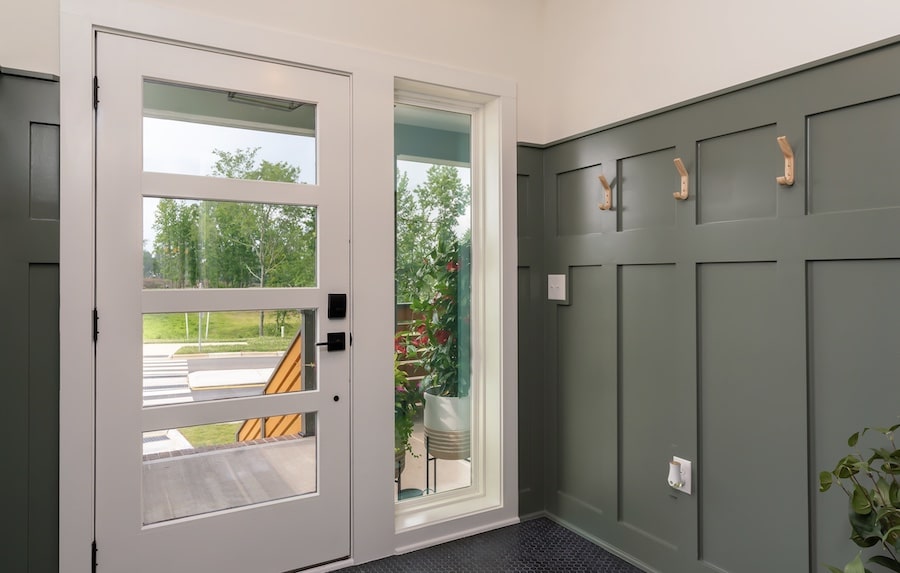
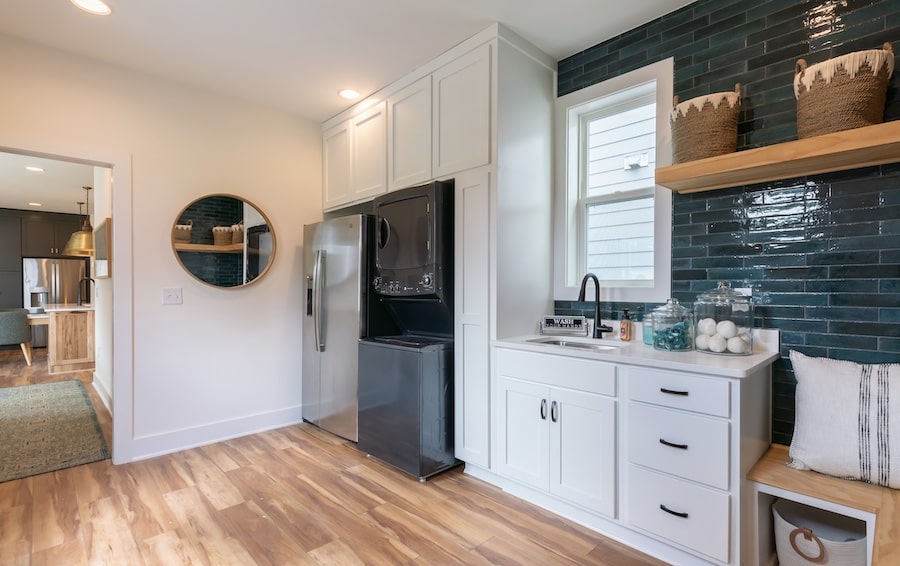
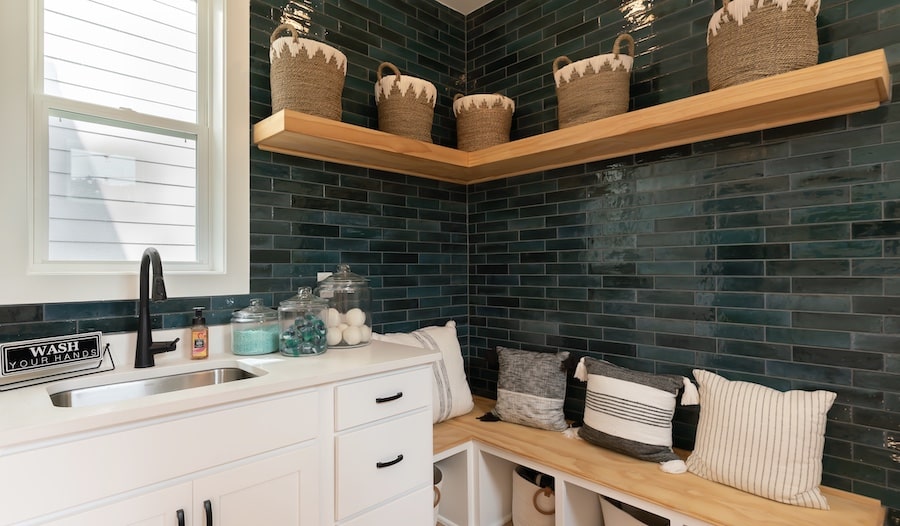
LESSON 2: Right-sized home offices
The AAH surveys told us that 58% of Millennials and 51% of Gen Xers want and are willing to pay for a “better home office or studio,” and that 51% of Millennials and 43% of Gen Xers want “home office spaces for more than one person” to work from home. In addition, two-thirds among both cohorts are frustrated by “using rooms for combined purposes.”
In fact, home offices need not be large, take up secondary bedrooms, or be part of a shared space. The concept home features a pocket office that utilizes the area under the stairs right off the kitchen (see below). It includes a window, a built-in desk, shelving, and a door for privacy, allowing our work-from-home parent to easily take part in a Zoom meeting while keeping an eye and/or ear on the preschooler.
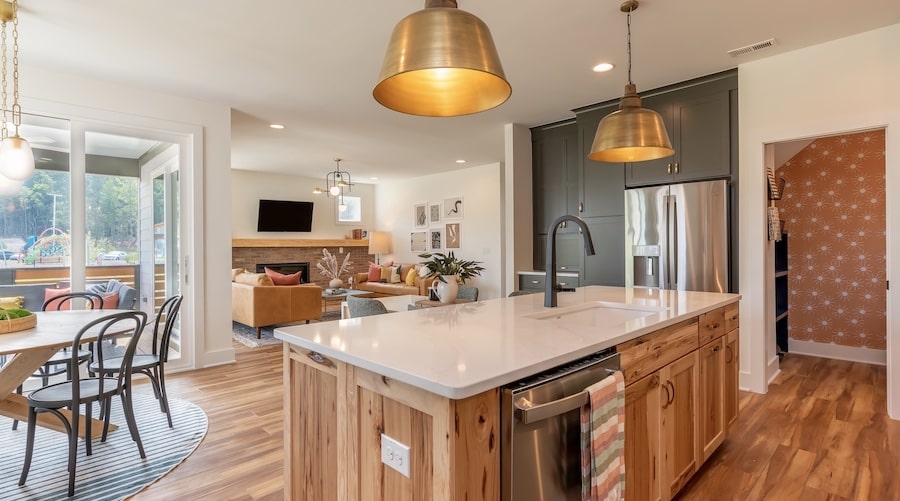
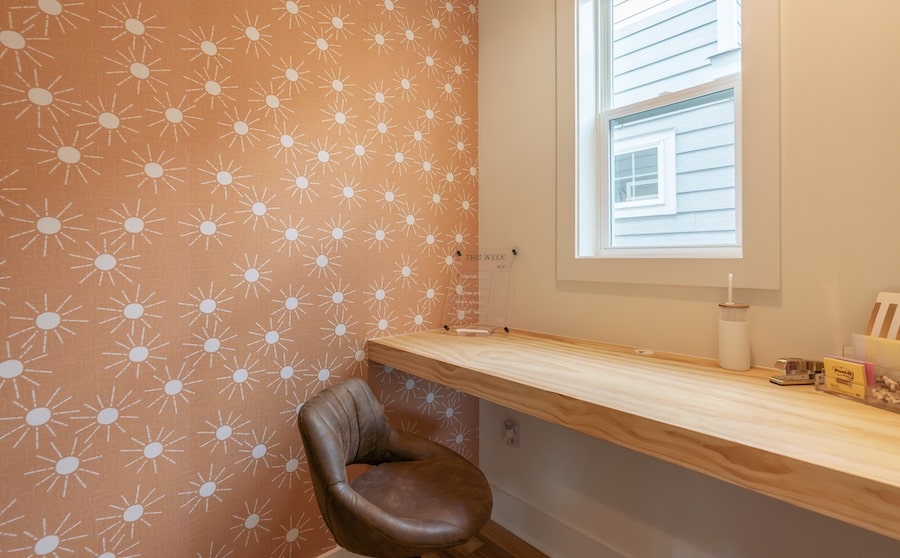
Upstairs, a small room adjacent to the primary suite and accessed from the hallway (see floor plan, above) can be either a laundry area (supplementing the family entry) or another right-sized—and dedicated—home office.
LESSON 3: Welcoming people and things
For 90% of survey respondents, the key meaning of “home” is “safety,” a mandate that brought back the vestibule, Garman Homes’ Alaina Money-Garman says, as a safe way to welcome guests and allow pack-age drop-offs while keeping the rest of the house (kids, pets) safely behind a glass pocket door (below).
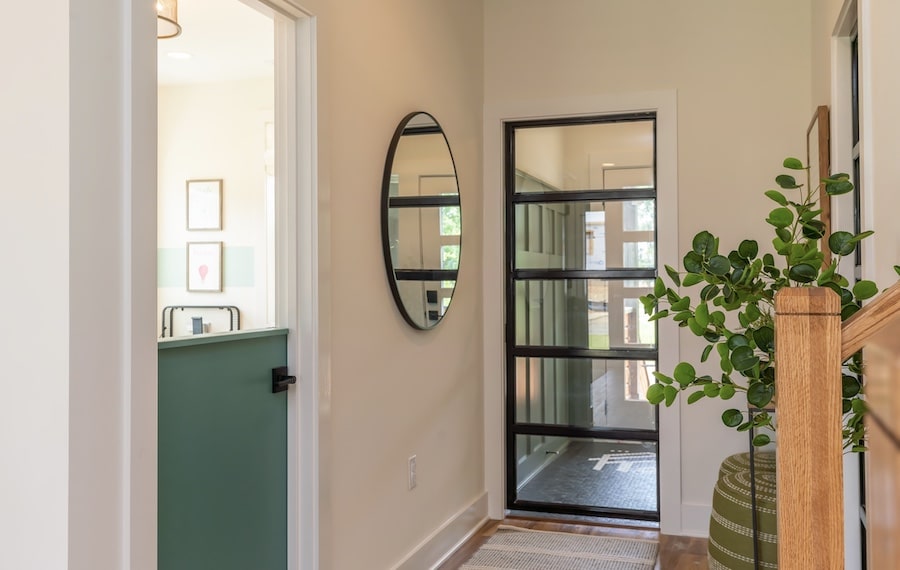
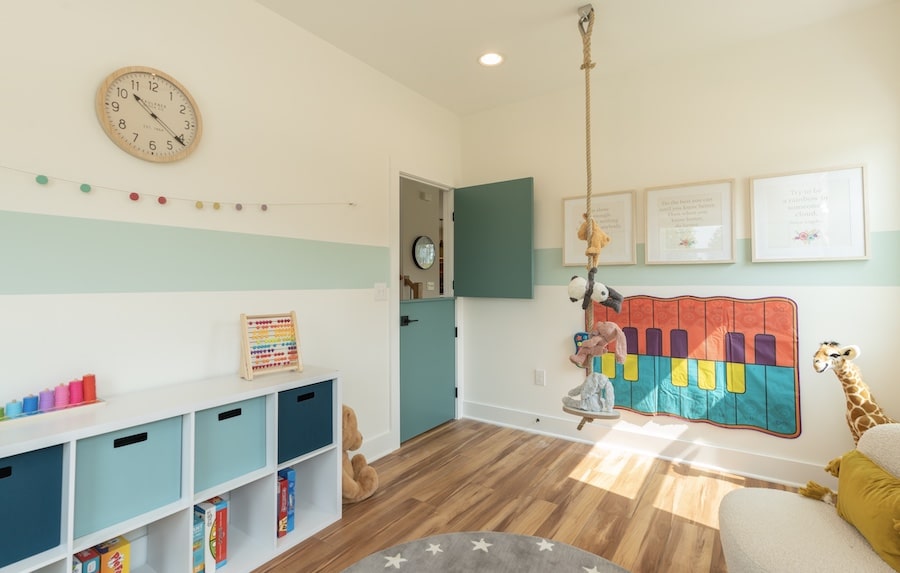
A guest suite accessed from the front porch serves longer visits. Also separated from the main house by a glass pocket door, it meets the desire for a dedicated guest suite or a quarantine space where you can still see family face-to-face.
LESSON 4: Kitchens on the front lines
“A better-equipped kitchen for cooking” was a priority for 61% of Millennials and 58% of Gen Xers willing to pay for one in their next home.
The concept home’s kitchen sink and island are purposely oriented toward the family room for better visibility. The attached eating area with child-height shelves offers space for multiple uses and allows children to take a more active role in family meals (see below).
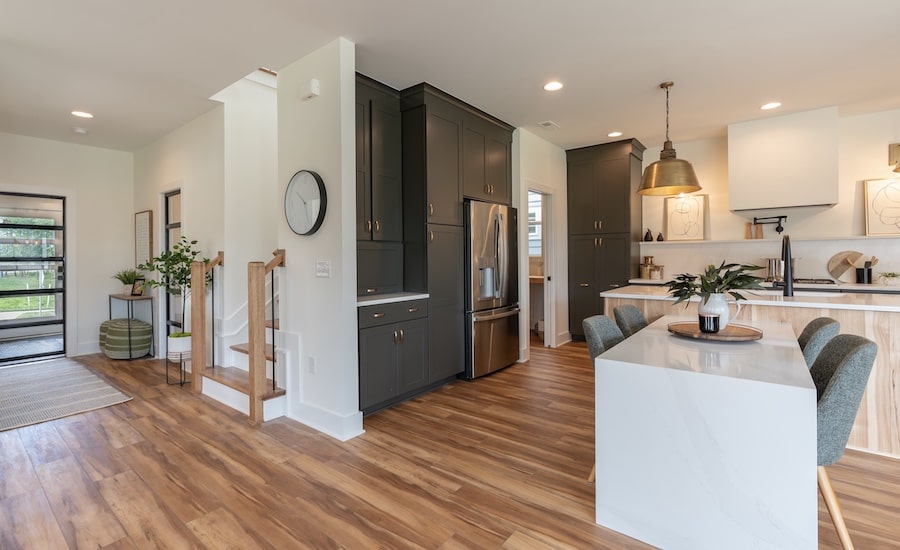

“We have an opportunity to rethink the traditional triangle approach to kitchens,” Dahlin Group’s Nancy Keenan says. The space includes what she calls a “Swiss Army knife” of multifunctional cupboards and an easy-to-sanitize, wall-length quartz shelf above the cooktop.
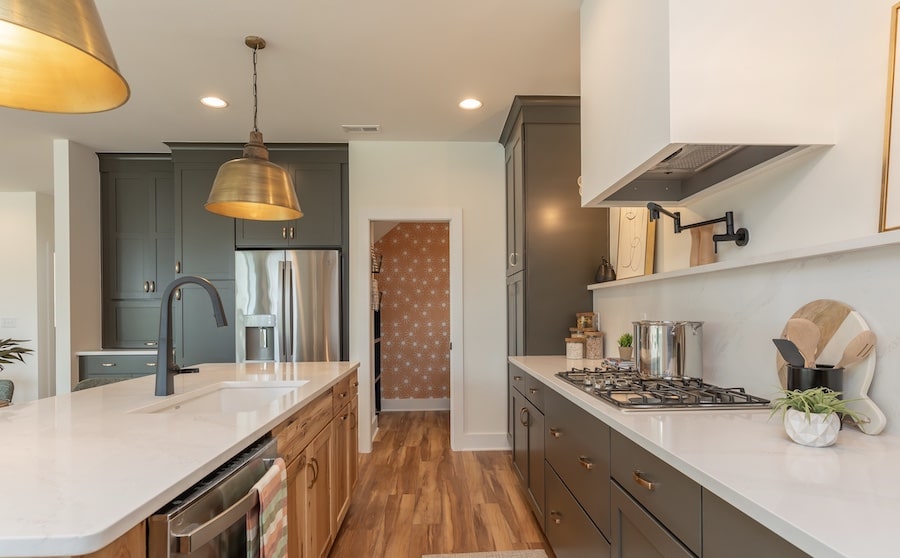
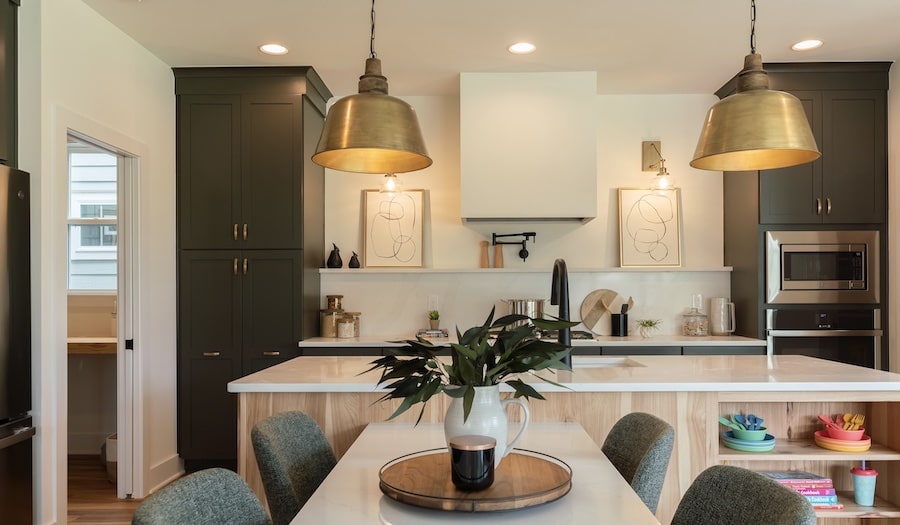
A continuous, single-surface backsplash made of germ-resistant material meets the desire of 55% of AAH survey respondents for cleanliness, as do touch-free faucets, which 48% of those who took our survey say they want.
LESSON 5: The new family bath
“Emotional health” was the most important aspect of wellness for 83% of people in the AAH study.
So the team reconsidered the typical secondary bath at a time when being in there can be stressful, especially when there are parents and children in the mix at the same time.
The concept home’s family bath includes an oversize tub with seating, a large shower for growing kids, a frosted glass wall around the toilet, and a retro schoolhouse-style sink, child-height shelving, and old-school gym lockers.
“Everyone who sees it asks themselves why we haven’t always done it this way,” Money-Garman says.
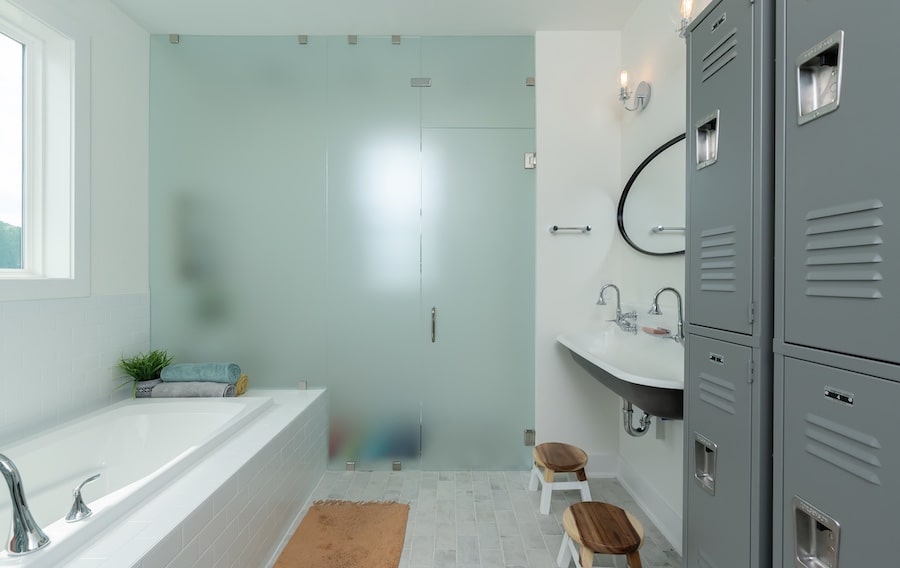
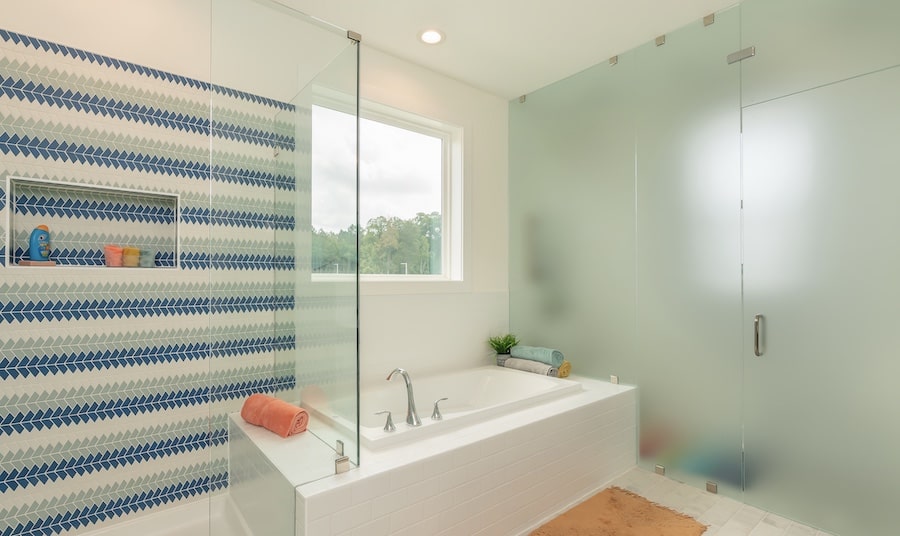
LESSON 6: Next-gen flex spaces
We found that 66% of Millennials and 65% of Gen Xers expect to be “using rooms for multiple purposes that can change over time” as more life, work, and school responsibilities continue from home. Enabling that flexibility requires rethinking the traditional bedroom closet.
“Strip closets in secondary bedrooms eliminate all flexibility,” says Don Ruthroff, principal and senior architect with Dahlin Group. “Built-ins are a better solution,” and can be added later or adapted as needs change.
The primary suite also features a hidden room behind a clever bookshelf façade (below). “I call this the ‘crying room,’” Money-Garman says. “Sometimes you just need to get away from everyone.”
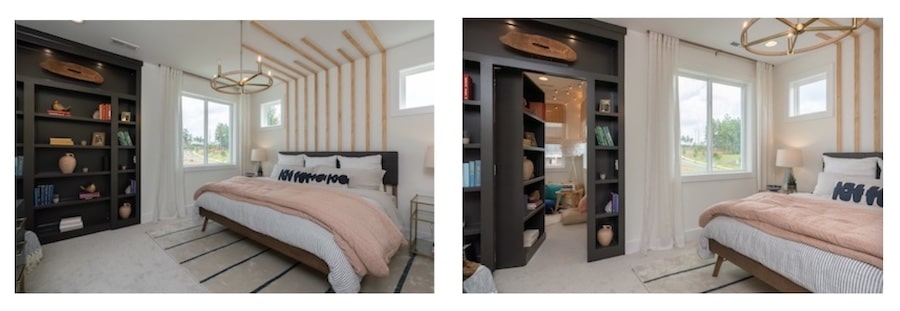
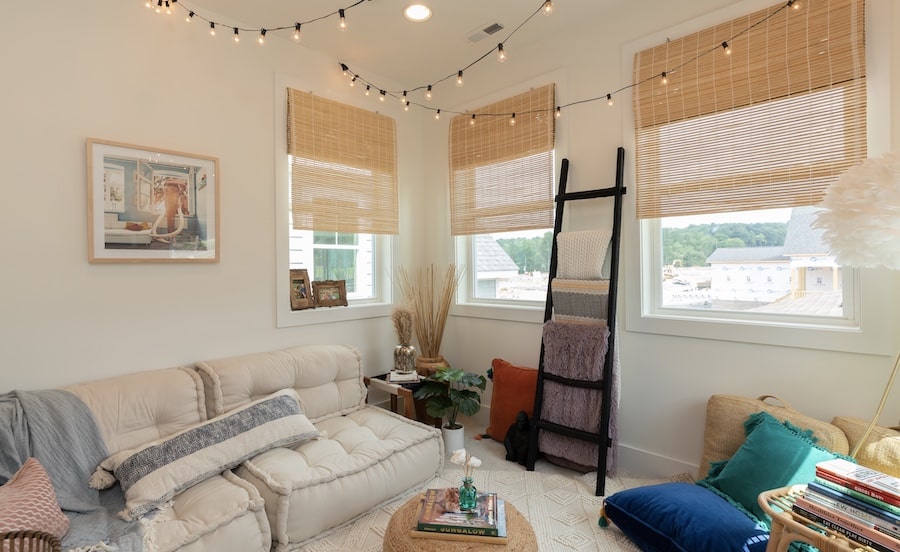
Working and learning from home are lasting expectations in homes going forward; nearly 60% of consumers expect to need two home office spaces, and 63% anticipate (and want) a school-from-home space.
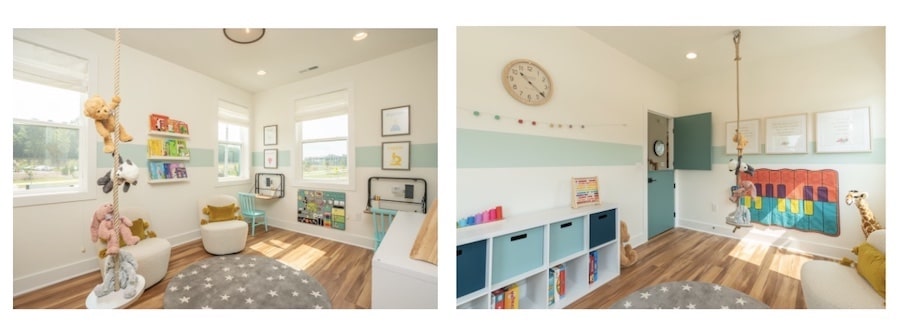
A flex room just off the vestibule/entry (above) meets that need, and was set up for remote learning. “The Dutch door can be left open up top for supervision but closed at the bottom to signal that school is in session,” Money-Garman says.
LESSON 7: Privacy and safety outdoors
The Barnaby concept home’s side courtyard addresses several pandemic-driven consumer wants and needs from the America at Home surveys: flexible, multifunctional outdoor living space; multiple points of access (including from the family entry between the garage and main living spaces); and a measure of privacy and safety.
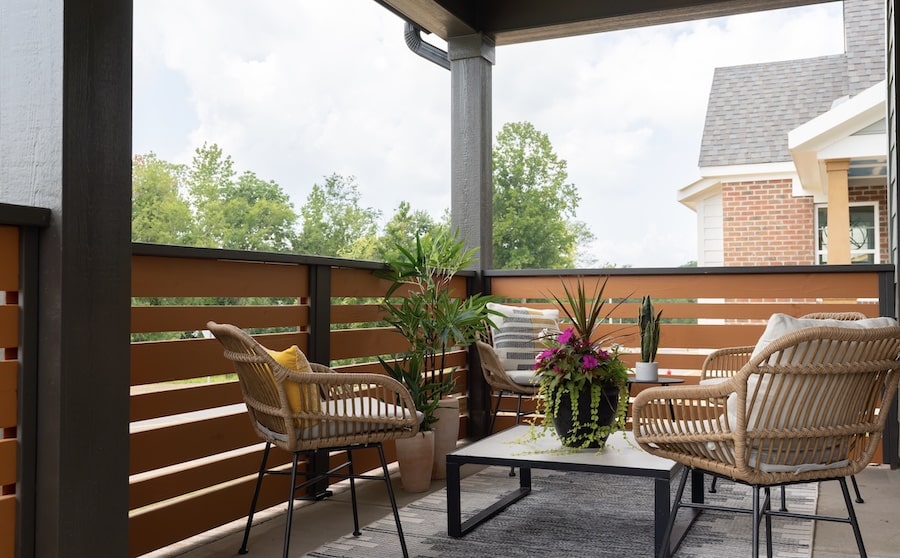
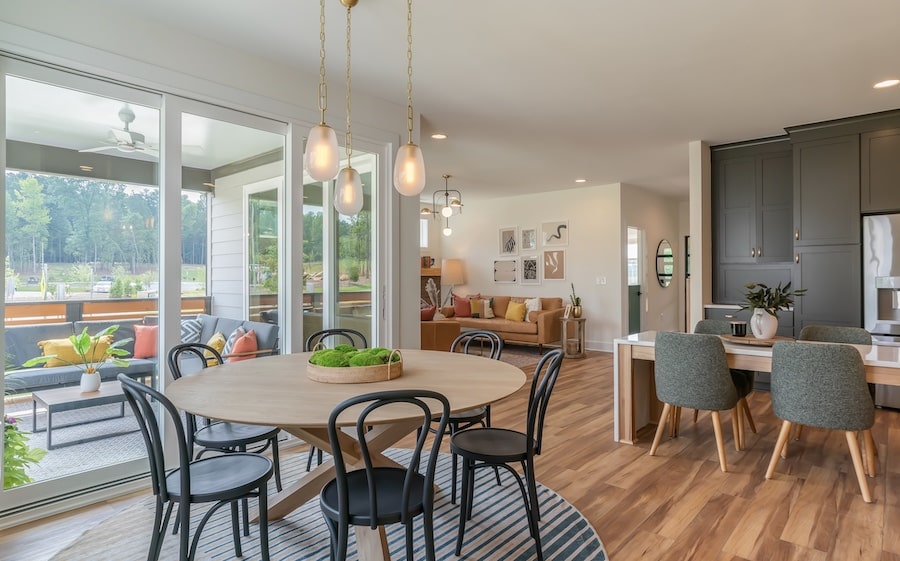
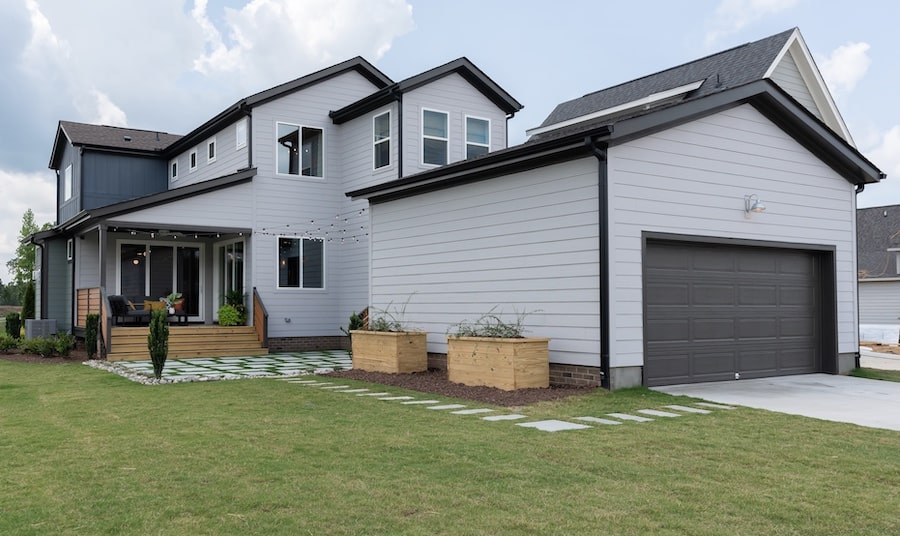
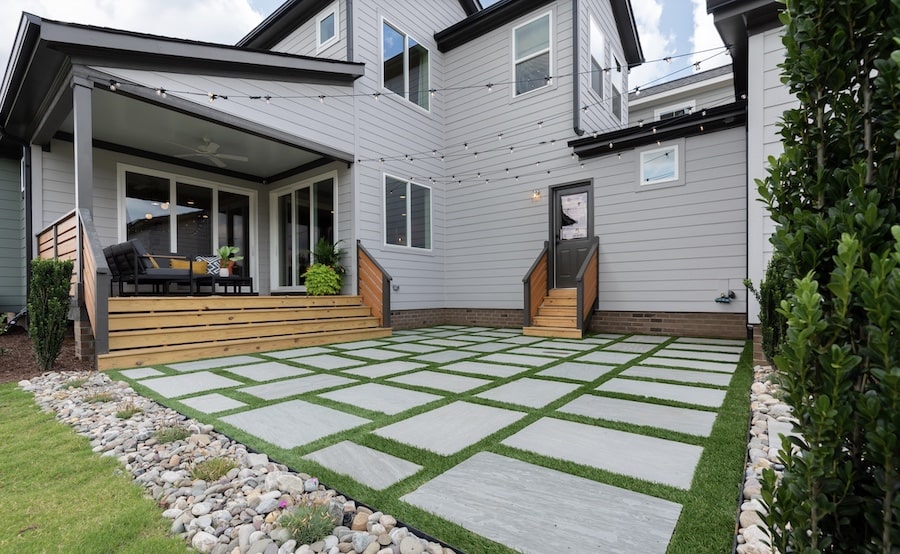
Teri Slavik-Tsuyuki is the founder of tst ink, in Encinitas, Calif. Her work has been featured in USA Today, Forbes, The Washington Post, and numerous industry and trade media. She also is a frequent speaker and facilitator at national events and custom-designed workshops.

